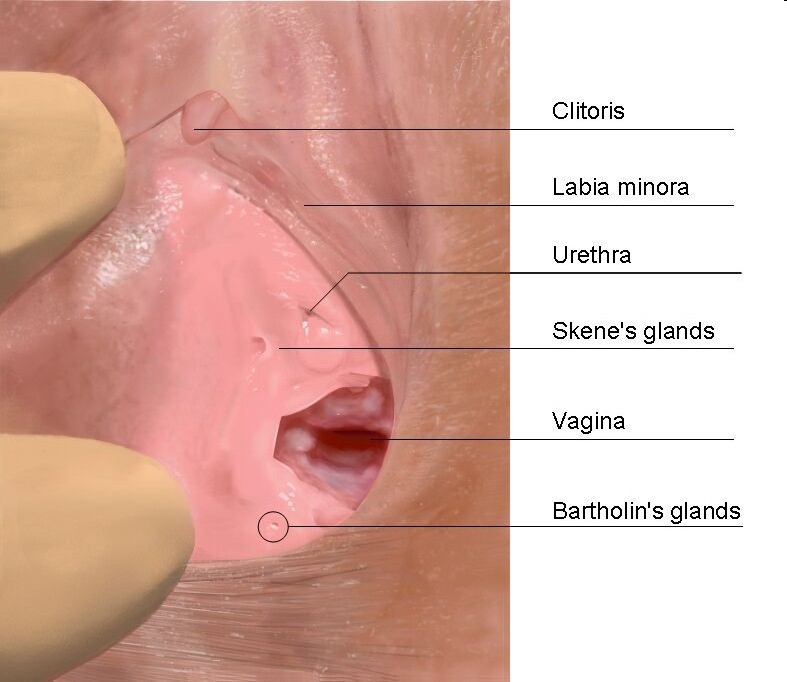
World's first bricks and mortar museum dedicated to vaginas, vulvas and the gynae anatomy.
How to get URL link on X (Twitter) App


 Generative AI products like ChatGPT work by scanning data, and then concocting a response which sounds like the data. In other words, it's always making something up, and giving an answer that sounds right based on what it has "learned". This is how we got here.
Generative AI products like ChatGPT work by scanning data, and then concocting a response which sounds like the data. In other words, it's always making something up, and giving an answer that sounds right based on what it has "learned". This is how we got here.


 First of all, it is important to establish parameters on the scope of this question. It is in fact two questions: can you read braille with your clitoris, and does this impact reading speed?
First of all, it is important to establish parameters on the scope of this question. It is in fact two questions: can you read braille with your clitoris, and does this impact reading speed?

 Some animals determine sex based on genes - there's multiple approaches to this, including the XY system (most common in mammals); the XO system (many invertebrates) the ZW system (most common in birds); and the XYXYXYXYXY system (pretty much just platypuses and echidnas).
Some animals determine sex based on genes - there's multiple approaches to this, including the XY system (most common in mammals); the XO system (many invertebrates) the ZW system (most common in birds); and the XYXYXYXYXY system (pretty much just platypuses and echidnas).

 The reason this research was done is rather interesting. Maria Friburg and colleagues (2023) needed to know exactly where a menstrual cup sits in the body to answer a related question: can bacteria that causes Toxic Shock Syndrome grow on a menstrual cup?
The reason this research was done is rather interesting. Maria Friburg and colleagues (2023) needed to know exactly where a menstrual cup sits in the body to answer a related question: can bacteria that causes Toxic Shock Syndrome grow on a menstrual cup?

 Now it's important to note that St Bernard of Clairvaux isn't the one doing the lactating. He's the kneeling guy. That's the Virgin Mary right there doing the lactating, with baby Jesus on her lap.
Now it's important to note that St Bernard of Clairvaux isn't the one doing the lactating. He's the kneeling guy. That's the Virgin Mary right there doing the lactating, with baby Jesus on her lap. 

 The Cholmondeley Ladies painting is accompanied by an inscription, which says "Two Ladies of the Cholmondeley Family, Who were born the same day, Married the same day, And brought to Bed the same day."
The Cholmondeley Ladies painting is accompanied by an inscription, which says "Two Ladies of the Cholmondeley Family, Who were born the same day, Married the same day, And brought to Bed the same day."






 You may be reading this and wondering "Surely this isn't an elaborate centrifuge designed to make the baby fly out? Surely?"
You may be reading this and wondering "Surely this isn't an elaborate centrifuge designed to make the baby fly out? Surely?"
 So we all begin on the same page, here's some of human vulvas. While everyone looks a little different, from the front you will see pubic hair (unless it's been removed), a "pudendal cleft" where the labia majora meet, and in 50% of people some labia minora and/or clitoral hood.
So we all begin on the same page, here's some of human vulvas. While everyone looks a little different, from the front you will see pubic hair (unless it's been removed), a "pudendal cleft" where the labia majora meet, and in 50% of people some labia minora and/or clitoral hood. 


 Little is known of Trota's life, including precise dates - she was thought to have lived in the first half of the 12th century. She studied at the medical school of Salerno, and later appears to have taught there. She also practiced medicine.
Little is known of Trota's life, including precise dates - she was thought to have lived in the first half of the 12th century. She studied at the medical school of Salerno, and later appears to have taught there. She also practiced medicine.